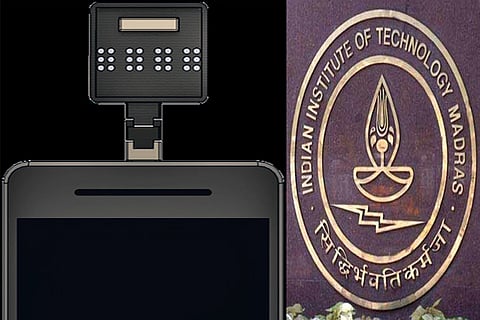

Chennai
In October, the initial device was to assist them with reading, typing and movement. However, team leader Sundar Raman P realised that this was yet another device that visually impaired people had to carry.
“Most visually-impaired people have phones. Why should we give them another device? So from early 2020, we began developing the device to work with a phone, which helps them read and type, by giving them the feedback in Braille,” said Sundar, an engineering student who developed the device along with Adil Mohammed, Shivam Maheshwari, Andrea Elizabeth Biju.
Explaining its spatial recognition, Sundar said most visually impaired people rely too much on their hearing, and therefore the device would assist them in the endeavour. With the Braille keyboard on one side and a camera on the other, the device would sync with the phone’s camera for a greater field of view. The spatial recognition feature uses an internet connection and live feedback to help the user.
“The device is adjustable. When they need to read, the device can fold to the back of the phone, with the Braille sensor facing outward. That way, since their hand is on the back of the phone, they can use it easily. Additionally, the device can be put parallel or perpendicular to the phone, or at whichever angle the user needs to help them navigate a space,” said Sundar.
At the James Dyson Award held earlier this year, the team won second place and a cash prize of £ 2,000. However, Sundar admits that the device has a long way to go.
“We are working with the visually impaired to develop the device. We hope to work with a local company to manufacture the device, and sell it at an affordable rate. Most assistive technology costs Rs 10,000. We want to sell the device for around Rs 4,000,” said Sundar.
Visit news.dtnext.in to explore our interactive epaper!
Download the DT Next app for more exciting features!
Click here for iOS
Click here for Android